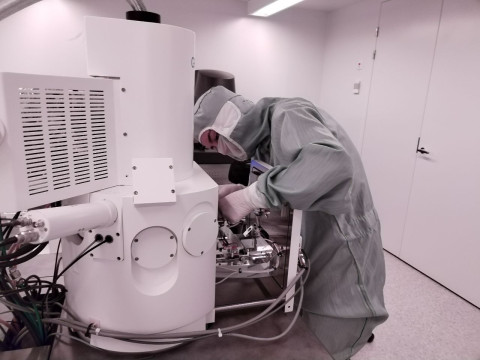Researchers from the Department of Physics and Mathematics at the University of Eastern Finland are involved in the international H-cube project, which aims at developing a ready-for-the-market, room temperature hyperspectral camera for Terahertz radiation, capable of detecting the range from 100 GHz to 10 THz. The project constitutes part of the ATTRACT phase-2 research initiative funded by the European Union’s Horizon 2020 research and innovation programme.
The development of the hyperspectral THz camera is based on converting the energy of THz radiation into heat, which changes the frequency of mechanical oscillations of the membrane. Silicon nitride has mechanical properties ideal for trampoline membranes but is transparent to THz radiation.
UEF’s role in the project pertains especially to the design and fabrication of special coatings that are needed for converting the energy of THz radiation into heat.
“These coatings are very lightweight and chemically stable, and they have high conductivity. Uniform coating allows for broad-band absorption, while meta-surfaces based on these coating designed at UEF allow for resonant absorption of radiation at a certain frequency, thus enabling hyperspectral features of the created THz vision system,” Professor Polina Kuzhir says.
The H-cube project brings together the expertise of Consorzio Nazionale per le Ricerche (CNR), Coordinator, Asteria Business Development, Elettra Sincrotrone Trieste, Fondazione Bruno Kessler (United Kingdom), the Research Center for Non-Destructive Testing, UAB TeraVil (Lithuania), the University of Eastern Finland, and the University of Salerno.
For more information, please contact:
Professor Polina Kuzhir, tel. +358 50 5666624, [email protected]
H-cube project https://www.h-cube.eu/








